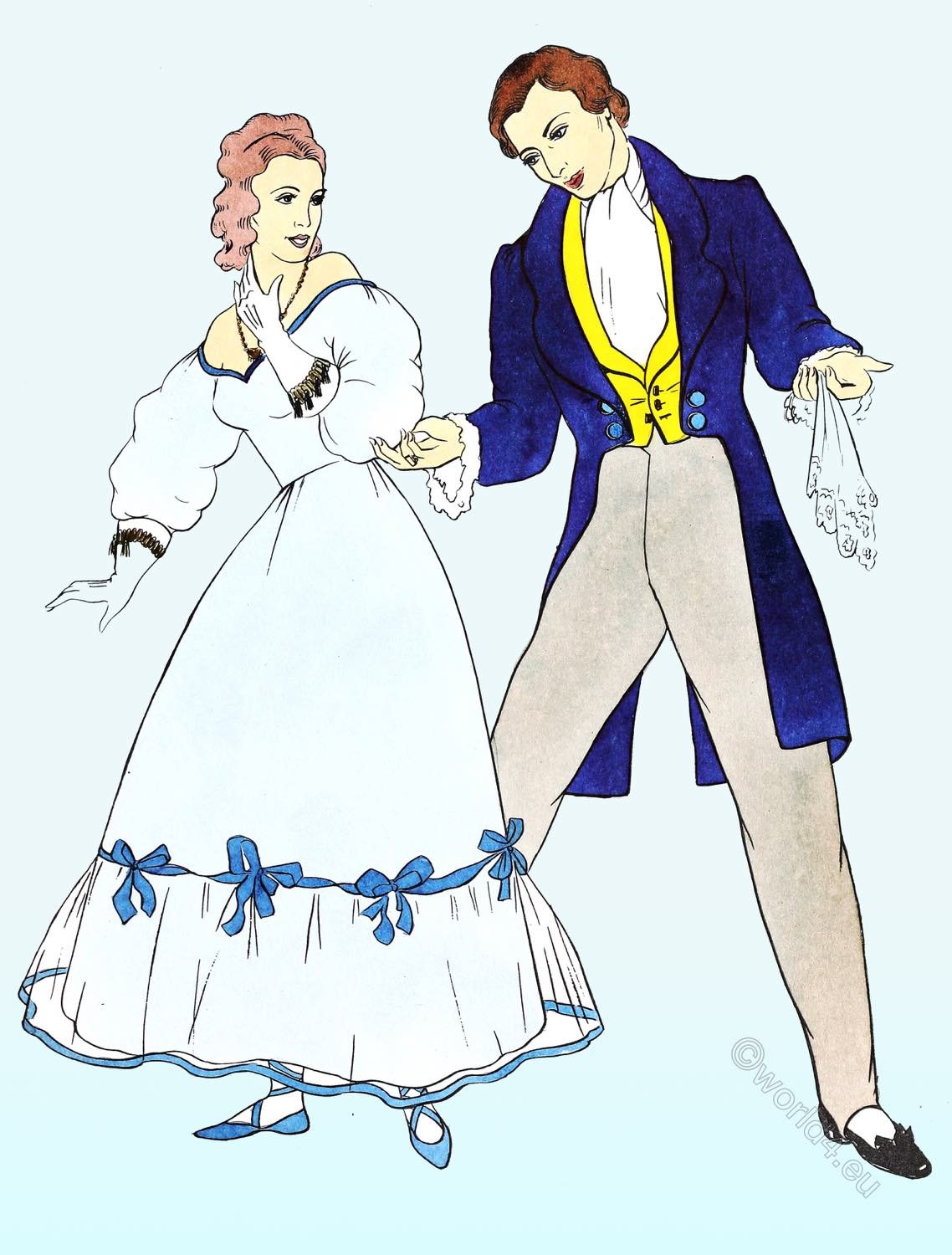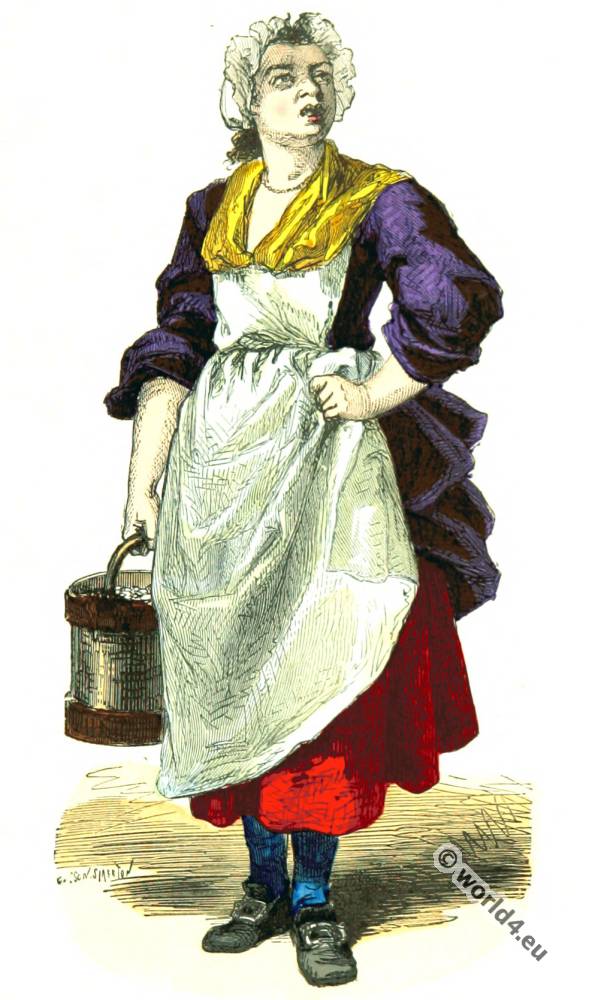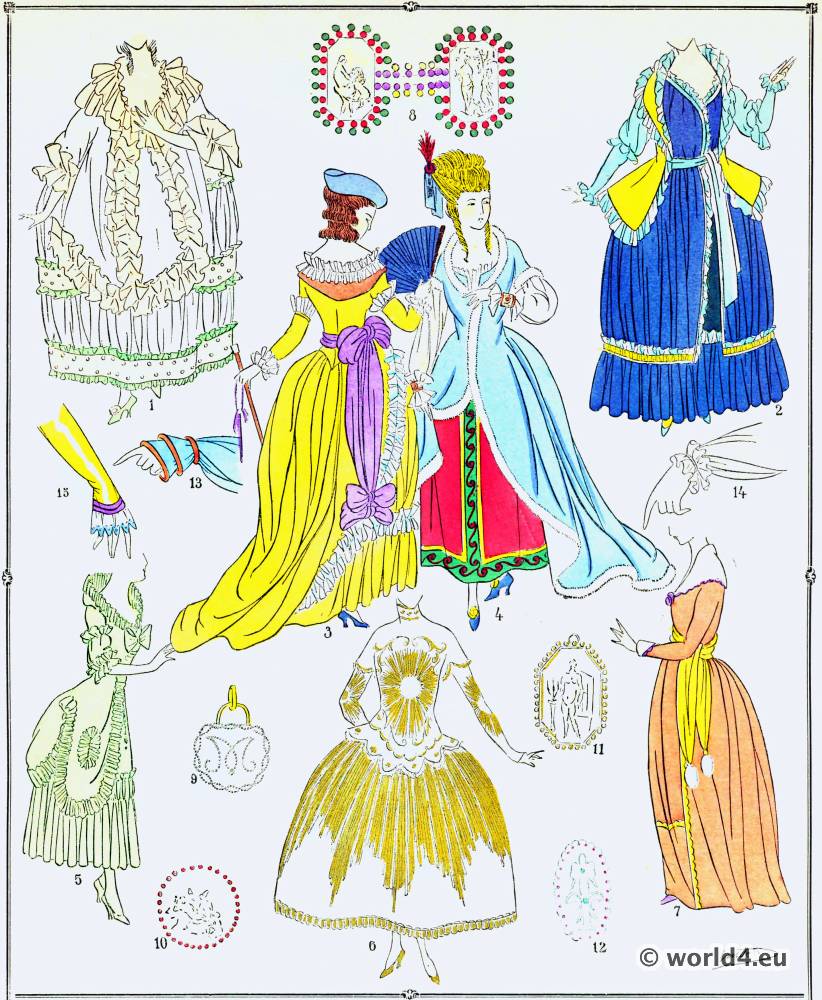
A. R. Brendamour, Engraver
WERTHER, a young German student, falls in love with Charlotte, the betrothed of Albert, and afterwards his wife. Werther becomes acquainted with Charlotte’s husband, who invites him to stay with him as a guest. In this visit his love blazes out into a terrible passion, and after vainly striving to fight it down, he puts an end to his misery by shooting himself.
WERTHER and CHARLOTTE.
“Full of despair. Werther threw himself at Charlotte’s feet, seized her hands, and pressed them to his eyes and to his forehead. Her senses were bewildered, she held his hands, pressed them to her bosom; and leaning towards him. with emotions of the tenderest pity, her warm cheek touched his. They lost sight of everything. The world disappeared from their eyes. He clasped her in his arms, strained her to his bosom, and covered her trembling lips with passionate kisses.
‘Werther,’ she cried, with a faint voice, turning herself away — ‘Werther!’ and with a feeble hand she pushed him from her. At length, with the firm voice of virtue, she exclaimed, ‘Werther!'”
Goethe, The Sorrows of Young Werther (1774).
The sufferings of the young Werther is the original title of the letter novel written by Johann Wolfgang Goethe, in which the young legal clerk reports until his suicide on his unhappy love affair with Lotte, who is engaged to another man. The plot of the novel is autobiographical in the sense that Goethe here literarily processed his Platonic relationship to the already unofficially engaged Charlotte Buff and covers the period from 4th May 1771 to 24th December 1772.
• • • Goethe represents himself, or rather one of the moods of his mind, in the character of Werther. The catastrophe, however, is borrowed from the fate of his friend Karl Wilhelm Jerusalem, Secretary of State in Wetzlar. He had fallen in love with a married woman, Elisabeth Herdt, née Egell (1741-1813), who remained unreachable for him. Since 1768 she was the wife of Philipp Jakob Herdt (1735-1809), the secret secretary of the legation of the Palatinate-Lautern in Wetzlar. The literary figure of Lotte in the novel also bears features of Maximiliane of La Roche, another acquaintance of the young Goethe from the time the novel was written.
“Albert” and “Lotte” were sketched from his friends Albert and Charlotte Kestner, a young couple with whom he had relations not unlike those of Werther in the early part of the story with the fictitious characters.
Many contemporary bourgeois readers perceived Werther as a disrupter of marital peace, a rebel and a free spirit who contradicted their moral and religious values. They also accused the book of tempting young people to commit suicide and believed that the “wave of suicide” that began after its publication confirmed their belief. Recent studies confirm nearly a dozen such suicides.
A veritable Werther fever broke out among the young people in particular, turning the protagonist into a cult figure whose blue tailcoat with brass buttons, yellow vest, brown gauntlet boots and round felt hat were imitated as Werther fashion. The suffering of the young Werther is regarded as the key novel of the Sturm and Drang (literally “storm and drive”). It developed into “the first bestseller of German literature”, was translated into numerous languages and influenced the later Romantic movement. The novel made Goethe famous in Germany overnight in 1774 and is one of the most successful novels in literary history.
Source: Character sketches of romance, fiction and the drama by Rev. Ebenezer Cobham Brewer, 1892. A revised American edition of the readers handbook. Edited by Marion Harland.
Related
Discover more from World4 Costume Culture History
Subscribe to get the latest posts sent to your email.






